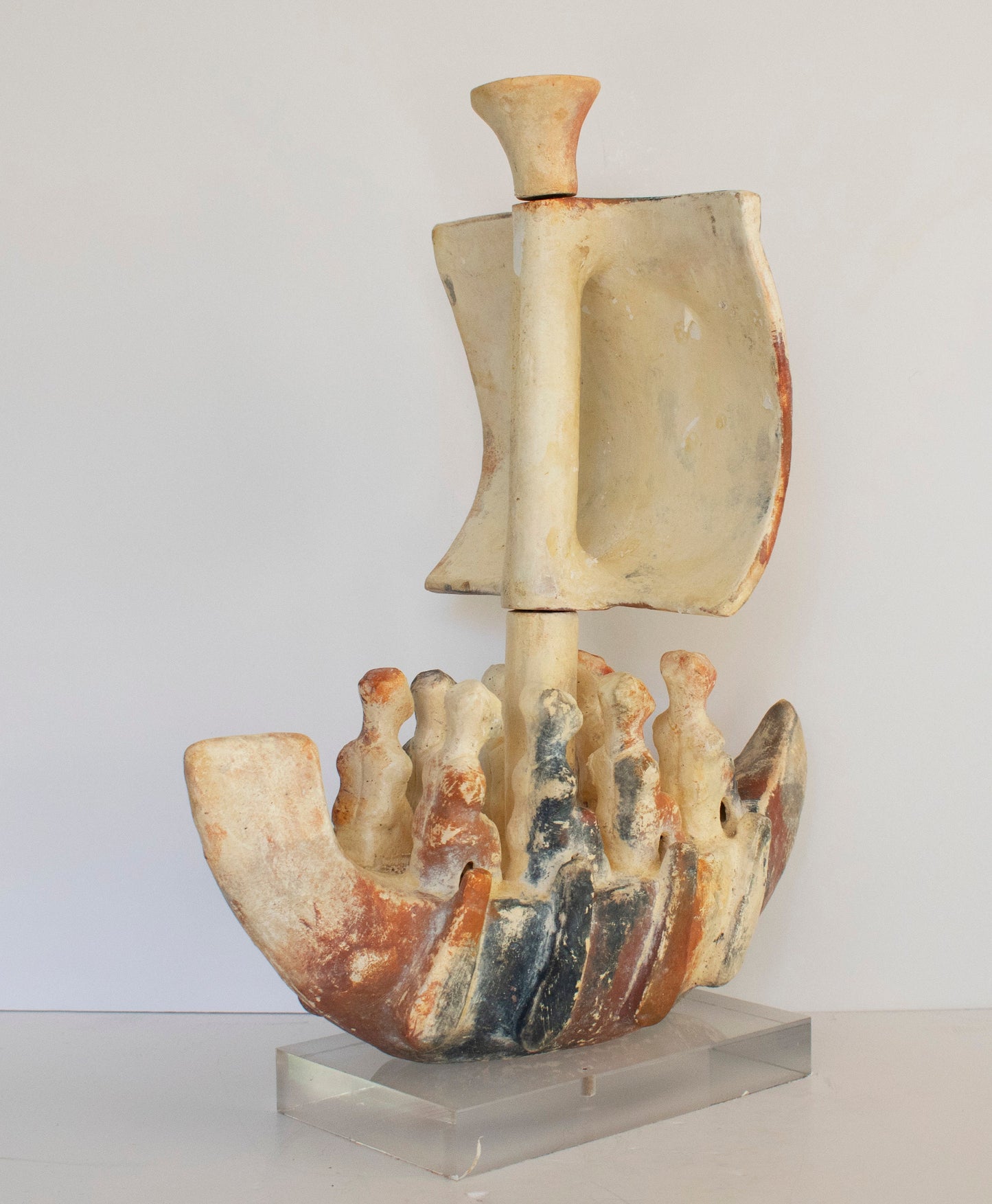Gallery Demeter
Ancient Greek Cycladic Ship with eight Rowers - Maritime Network - Travel across the Seas - Ceramic Artifact
Ancient Greek Cycladic Ship with eight Rowers - Maritime Network - Travel across the Seas - Ceramic Artifact
Regular price
€349,90 EUR
Regular price
Sale price
€349,90 EUR
Unit price
per
Tax included.
Shipping calculated at checkout.
Couldn't load pickup availability
Item Specifics
Material:Ceramic
Condition: New, Handmade in Greece.
Height: 33 cm - 13 inches
Width: 24 cm - 9,4 inches
Length: 14,5 cm - 5,7 inches
Weight: 1500 g
Cycladic is the term used for the civilization that developed in the region of the Cycladic Islands during the Bronze Age (3200-1100 B.C). The acme of this civilisation was reached during the first phase of the Bronze age (3rd millenium B.C.) and it is known as the Early Cycladic Period.
The beginning of a permanent human activity in Cyclades dates at about 5th millenium BC. There exists, however, and earlier but indirect evidence of occupancy for example, samples of obsidian from the Melos has been found in positions in Greek mainland (cave Franchthi Argolida) that is dated at the 8th millenium B.C. In the later neolithic period are dated a lot of discoveries from the settlement that has been excavated in the small island Saliagkos near Antiparos , while the ruins that were found in the Kefala position of Kea belong to the early Bronze Age (3200 BC). At the same time with the early minoan civilization of Crete and the early helladic civilization of Greek mainland, the 3rd millenium was developed in Cyclades the Cycladic culture, as favoured from the geographical position between Greece and the East and from the soft climate. Ruins are found almost in all the islands, even in the smallest ones. The elements tell us for independent small communities with islander character, as the arable land was minimal.
The precocious period (Early Cycladic) is separated in three phases, that are named symbolically by the mainer places of the origin of the discoveries: Phase Grotta-Pelos (3200-2800 BC), phase Keros-Syros (2800-2300 BC), Phylacopi I phase (2300-2000 BC).
During the first phase, houses were built on low hills to be protected from flooding and enemies and were not protected by walls; the residents were activating in fishing. In the second phase, exterior invasions forced the residents to retreat inside, in hills that were protected from walls, the houses were built near one another and only small runways were left between them (Kastri Syros, Naxos, Kynthos of Delos).
This movement implies loss of control of seas and the threat of an external enemy, perhaps minoan Crete.
In the third phase, the influence Crete was strong; the settlements were again seaside (Milos-Filakopi I, Paros, Amorgos, Thera) and constituted centres of conduct of the Cretan trade.
The same happened in the next period, which covered the first half of the 3rd millennium and called Middle Cycladic period (2000-1550 BC).The settlements - according to the findings from Melos (Filakopi II), Paros (Paroikia), Kea (Agia Irini), Thera, Therasia, Delos, Tinos, Syros, Sifnos and Amorgos was - all coastal ports and were on trade between Crete and the rest of the Greece.
In the beginning of the next period (Late Cycladic period) Cyclades were generally influenced by minoan sea domination. With the destruction of minoan civilization - as a result of the explosion of Thera's volcano(about 1520 BC) - appeared on the scene the Myceneans.









